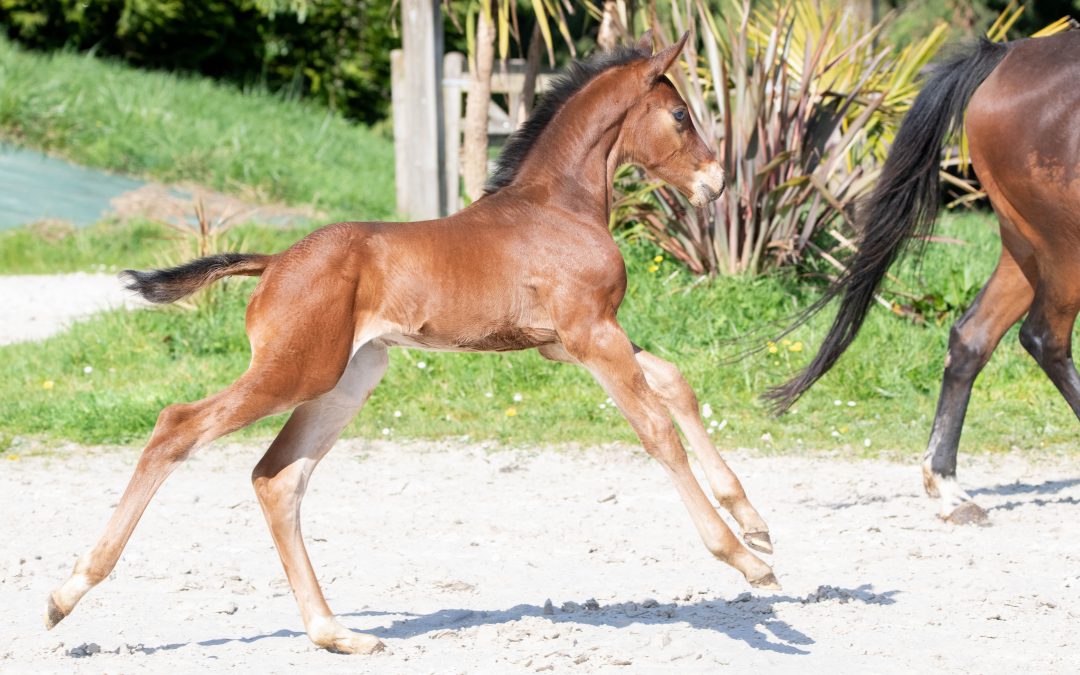Before wishing you a happy holiday season, BLH and the Châtenay Reproduction Centre would like to take this opportunity to give you a transparent assessment of the first third of the egg collection and ICSI season.

Review of the first third of the ICSI season
While breeding activities nationwide are experiencing sharp declines in insemination, breeding sales and sales prices, the number of oocyte punctures and ICSI has been growing steadily since 2019, with annual growth of 15-20%.

The increase in the number of mares welcomed is accompanied by a rise in the average number of embryos obtained by ICSI. This figure has risen from 1.9 in 2019 to 2.6. Between October 2024 and the end of December 2024, 69 mares were punctured, resulting in the production of 180 embryos.
We are fully aware that these extraordinary figures may seem suspicious to the most sceptical. They may impress insemination technicians and worry stallions who haven’t yet turned the corner. However, at BLH, we see this technical advance as a remarkable opportunity, comparable to what ultrasound, insemination, semen freezing and embryo transfer have represented in their time.
Our industry stands at the crossroads of two worlds: rural and cosmopolitan. These worlds are sometimes united by common ideas, but often divided, especially when economic realities are more experienced by some than others.
Nevertheless, there’s no doubt that ICSI is only a tool, but a powerful one. It offers all breeders the technical and economic solutions they need to take their breeding to the next level.
A LITTLE TECHNIQUE …
Oocyte puncture and the mare cycle
The results obtained mean that oocyte puncture and ICSI can be carried out all year round, opening up new prospects. Oocyte recovery rates per follicle and the number of embryos obtained per oocyte make it possible to work with mares with only 6 to 10 follicles on the ovaries. This situation is frequently observed during mares’ cycles, before the appearance of a dominant follicle.
The results obtained mean that oocyte puncture and ICSI can be carried out all year round, opening up new prospects. Oocyte recovery rates per follicle and the number of embryos obtained per oocyte make it possible to work with mares with only 6 to 10 follicles on the ovaries. This situation is frequently observed during mares’ cycles, before the appearance of a dominant follicle.
A LITTLE GENETICS …
What were the most widely used standards?

It’s no surprise to find UNITED TOUCH S at the top of the list of stallions used. On the one hand, he’s one of the most incredible performers in history, and on the other, the quality of his ICSI semen is among the best available.
He is followed by COMME IL FAUT, sire of the Olympic champion, whose production statistics are exceptional despite still-limited fertility.
Chacco Blue, the stallion with 87% of international horses to his credit, completes the podium. Although less sought-after by auction breeders (10% of ICSI users), he has unquestionably been the world’s leading stallion for over ten years.
Finally, at the foot of the podium, Selle Français Baloubet du Rouet continues to benefit from the absence of a successor of his stature in this studbook. He remains highly appreciated by breeders of mares from good French bloodlines.

